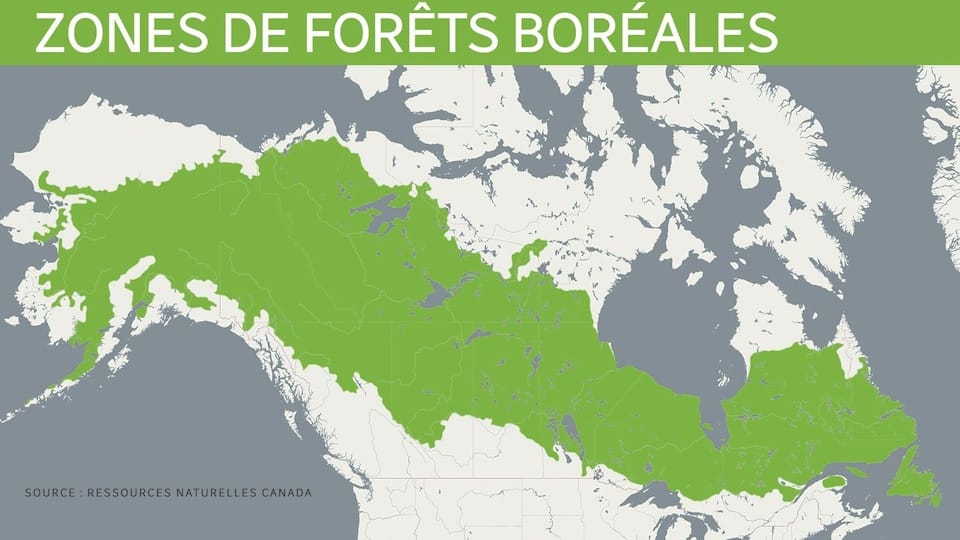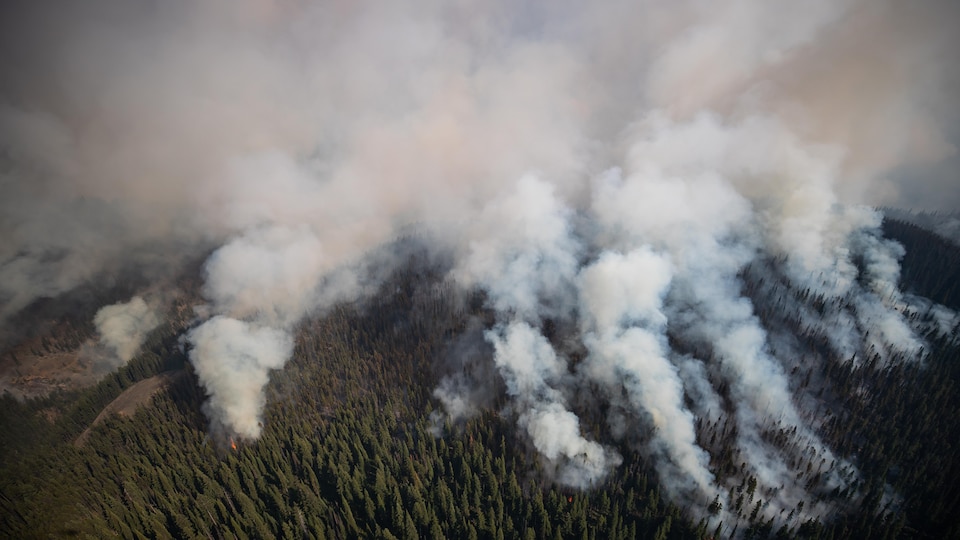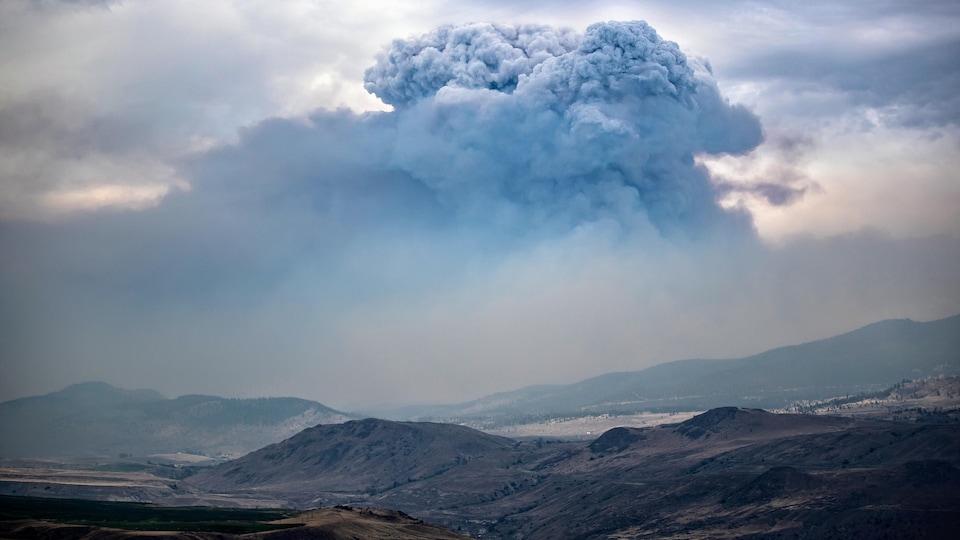Canada contains just under 30% of the world’s boreal forests. These cover much of the center of the country, from the Yukon to Newfoundland and Labrador. While these expanses are important carbon sinks, the increased frequency of fires threatens to release this CO2 stored in the atmosphere.
By mid-century, CO emissions2 caused by boreal forest fires in North America could represent 3% of the global carbon quota remaining in order to limit global warming below 1.5°C, according to the results of the study published this week in review Science Advances.
This is the equivalent of the annual carbon emissions of 2.6 billion cars, explains Carly Philips, of the group Union of Concerned Scientists based in Cambridge in the United States, who participated in the study.
That said, by studying wildfire management in Alaska in particular, the researchers proved that this trend could be reversed: with a better wildfire management strategy, Alaska could avoid emitting up to 3 .87 gigatonnes of CO2 in the atmosphere by 2050.
And prevent the emission of one metric ton of CO2 through these boreal forest fire management methods would cost an average of US$12, according to their estimates.
It would be an effective carbon reduction strategy and above all comparable, if not less expensive, than other carbon reduction strategies.
says Carly Philips.
Restore fire regimes
The idea of better forest fire management is not to suppress these fires, as they are part of the boreal forest cycle, but rather to restore them to their historic levels, according to the study. They used to be more common, but burned smaller areas.
To estimate carbon emissions from wildfires, the researchers conducted a meta-analysis of available data on fire regimes in Canada and Alaska and their projections.
They then analyzed specifically for Alaska what would be the cost of eliminating the emissions linked to these fires, by combining this information with other databases (on fuels, the costs of eliminating carbon emissions, of management lights, etc).
Carbon priority?
In Canada, fire management prioritizes fires that pose a risk to infrastructure and communities, but it would be wise to also take into account the greenhouse gas emissions they can emit, argues Carly Philips.
While it is too early to judge the effectiveness of this system on a larger scale, the idea of giving carbon priority to fire management should be part of the discussions, confirms Gregory Paradis, forest engineer from the University of British Columbia (UBC).
The fixed annual budget given to fire management could, among other things, protect carbon. It could even become the primary focus for prioritizing resource deployments to extinguish fires. I’m not saying that would be the solution, but we have to talk about it
he argues.
A disaster to avoid
The climate emergency is such, according to Gregory Paradis, that Canada should prioritize rapid and less costly carbon storage pathways to avoid hit the 1.5 degree wall
.
Once the 2050 threshold is passed and the climate disaster
ruled out, the country will be able to have more informed discussions for the future, he says, recalling that the fight will not be over.
If there are ways to sequester carbon [12 $US] just with good management of where you put out forest fires, it’s extraordinary. Because right now there are people who are perfectly willing to buy carbon credits at US$50 a ton
he said.
This is not a solution that can be exported everywhere. It won’t be able to be applied in northern California, even in southern British Columbia, but I think that at least we realize what is at stake
says Carly Philips, recalling that these areas that have been affected by devastating fires are not boreal forests.
I believe that where we are in terms of the climate crisis, it makes sense to explore all the options, especially since this one is inexpensive
confirms Carly Philips, who now works at the Pacific Institute for Climate Solutions from the University of Victoria.
Potential still underexploited
Canada would benefit from developing a balance sheet of carbon sequestration opportunities that takes into account the potential of forest management, according to forest engineer Gregory Paradis.
We have greater potential than almost any other country in the world to contribute to carbon sequestration by virtue of our forest capital
, he says. However, it is still under-exploited, deplores Gregory Paradis.
” The forest is not a hypothetical forest. It’s not as if we said to ourselves that, if we continue to invest, one day, we will have a forest that will be able to sequester carbon. We already have this forest. »
Boreal forest ecosystems contain large tracts of peat, which are often overlooked, but which sequester even more carbon than trees. They are vital for the capture of CO2but they develop over thousands of years.
The real risk is losing that envelope of peat. It’s a big carbon balance that you really shouldn’t let go, and when you’ve lost it, it’s impossible to recover it in the short term.
says Gregory Paradis.
The trees you see are just the tip of the iceberg
he warns.
Reference-ici.radio-canada.ca



